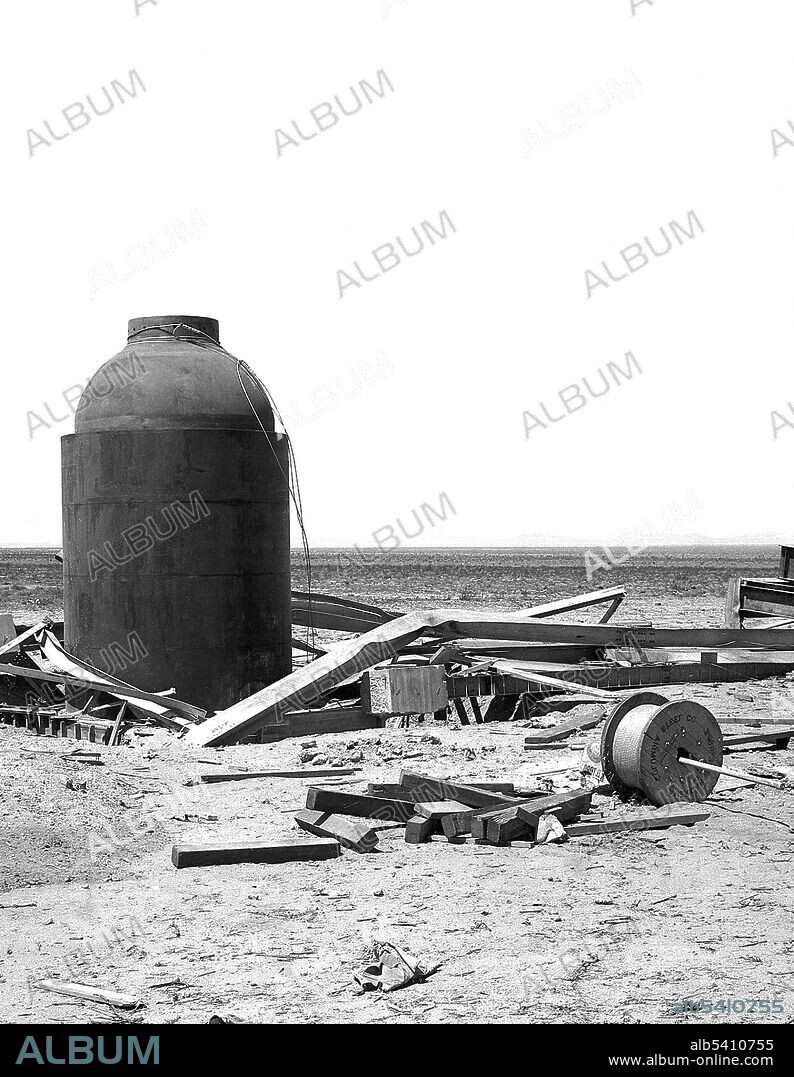alb5410755
Trinity Test Site, Manhattan Project, Jumbo,1945

|
Añadir a otro lightbox |
|
Añadir a otro lightbox |



¿Ya tienes cuenta? Iniciar sesión
¿No tienes cuenta? Regístrate
Compra esta imagen

Título:
Trinity Test Site, Manhattan Project, Jumbo,1945
Descripción:
Ver traducción automática
The Gadget device detonated at the Trinity site involved two explosions: first a conventional TNT explosion and then a nuclear explosion, if the chain reaction started by the first explosion was maintained. The Jumbo device was designed by the X2-A section to act as a failsafe device for the Trinity test explosion. The bomb would be placed into the heart of Jumbo, and if the bomb's detonation was unsuccessful, the outer walls of Jumbo would not be breached, making it possible to recover the bomb's plutonium. Jumbo was a steel cylinder 10 feet in diameter and 25 feet long with walls 14 inches thick, and weighed 214 short tons. By the time of the actual Trinity test, Manhattan Project officials were confident enough in the plutonium bomb and secure enough in the stream of plutonium coming from Hanford and the use of Jumbo would interfere with the gathering of data on the explosion, the primary objective of the test. Jumbo was deemed unnecessary. Instead, it was hoisted up a steel tower 800 yards from the explosion, where it could be used for a subsequent test. In the end, Jumbo survived the explosion, although its tower did not.
Crédito:
Album / Science Source
Autorizaciones:
Modelo: No - Propiedad: No
¿Preguntas relacionadas con los derechos?
¿Preguntas relacionadas con los derechos?
Tamaño imagen:
3256 x 4200 px | 39.1 MB
Tamaño impresión:
27.6 x 35.6 cm | 10.9 x 14.0 in (300 dpi)
Palabras clave:
 Pinterest
Pinterest Twitter
Twitter Facebook
Facebook Copiar enlace
Copiar enlace Email
Email
